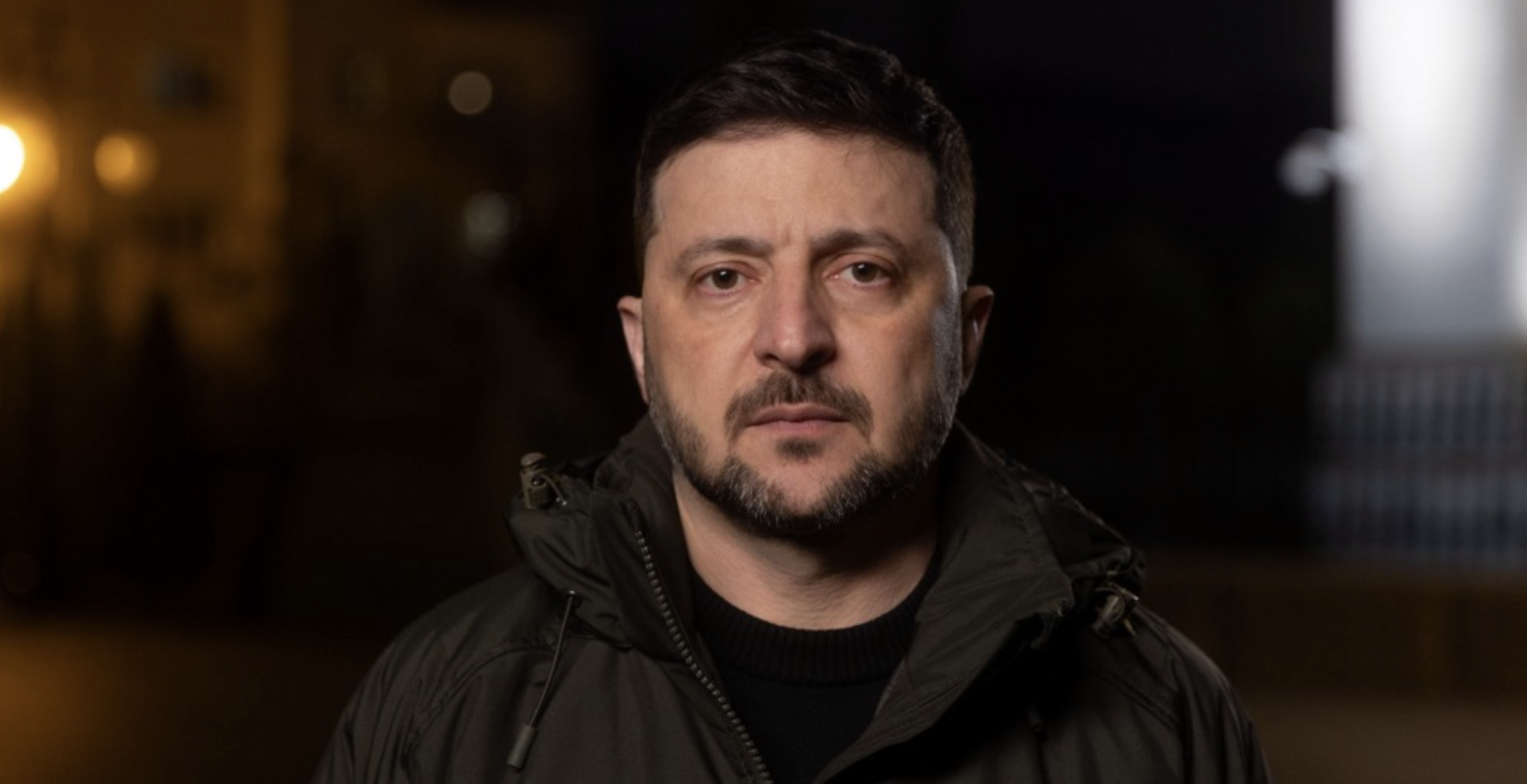
The Kharkiv Press Club non-governmental organization created a project about war crimes committed by Russians in the Kharkiv Oblast. “Kharkivshchyna: Ruined, but Unbreakable” are stories about “Scars” of war and “Traces” of humanity. The Embassy of the United States of America in Ukraine supported the creation of the film series.
A series of films under the common title “СЛІДИ / SCARS” are stories about the consequences of the war in the Kharkiv Oblast. As part of the project “Kharkiv Oblast: Destroyed, but Unbreakable,” the documentary filmmakers of the public organization Kharkiv Press Club record memories of the “traces and scars” of war crimes committed by the Russian invaders in Sloboda Ukraine. Head of the Kharkiv Press Club Oleksandr Shvets and coordinator Hennadii Khomik spoke with the ArmiaInform correspondent about the importance of the project for the Kharkiv Oblast.
Please tell us about the purpose and mission of the project. How did the idea come about?
“The idea of the project appeared during a long journey on the 24th of February 2022, when I transported my family with a three-month-old granddaughter from Kharkiv to the western border of Ukraine,” says Oleksandr Shvets. “The trip was difficult; I drove for two days. And during these two days, I thought about how we, journalists, could join the fight against Russian fascism that came to our land. “How can journalists help during the war? Inform, document, explain. The idea arose to combine these three things, creating a project that would not only document events but also show and explain to the public — both Ukrainian and foreign — what is happening in Ukraine due to Russian aggression. So we focus on the crimes of the Russian invaders on Ukrainian land and the story of the humanity of those Ukrainians whose lives were destroyed by the war.”
How quickly did you manage to move from the original plan to the practical realization of the project?
“I shared the idea with my colleagues, with Hennadii Khomik immediately after returning to Kharkiv. However, during the first months, we had to deal with urgent issues: to evacuate people, to inform Kharkiv residents about current events, and to support journalists who lost their jobs. Therefore, at first, we focused on such issues as supporting the work of the Kharkiv Press Club and Hromada Group, a network of local media in the Kharkiv Oblast, which was already active in many communities in the region and had become a prominent player in the information space of Sloboda Ukraine even before the large-scale invasion. “But in May 2022, as soon as the urgent issues were resolved, we quickly prepared a project proposal and submitted it to the Democracy Promotion Fund at the US Embassy in Ukraine. The consideration of the application took quite a long time, but eventually, we received support, and in May 2023, we began working on the film cycle.”
What exactly does the project entail?
“The plan presupposes 60 video stories – in fact, documentaries that tell about the crimes of the ruscists in the Kharkiv region,” says Hennadii Khomik. “From the start, we planned to release two versions — Ukrainian and English. In our view, it is equally important to inform the world community about the events in Ukraine, including the Kharkiv Oblast. No one can do this important job in our region better than us. The Democracy Promotion Fund agreed with our reasoning and supported the project.”
Geographically, the project covers the Kharkiv Oblast. Why this region? What is special about it?
“The location of our region has to an extent, become a sentence for it,” says the head of the organization and project, Oleksandr Shvets. “The very long border the Kharkiv Oblast shares with the Russian Federation meant that the invaders captured a large part of the region in the very first days of the war and bombed the regional capital. Russian troops occupied more than a third of the region and were here for much longer than in Kyiv, Chernihiv, or Sumy. So, special attention to the Kharkiv Oblast is fully justified.
“In addition, the professionalism of the team of local journalists put together in the Kharkiv Oblast contributed to the effective work of the project here. Our team has been working in the region for many years, and we know it well. The film crews involved in the project include cameramen, journalists, and directors who are intimately familiar with the land and the people. Hence, our choice; but in the future we will consider other regions as well, to scale the plan. If the project is successful in the Kharkiv Oblast, we will propose to extend it to other regions of the country.”
What are the features that distinguish Kharkiv Oblast from Chernihiv, Sumy, Zaporizhzhia, Kherson, Donbas?
“Russian atrocities are a common feature for all occupied territories, because the bloody face of the invaders has manifested itself everywhere the same way. So, I do not see fundamental differences between Kharkiv, Sumy, or Donbas,” says Oleksander Shvets. “The Russian invaders behaved the same way in the north, south, and east of Ukraine. For example, almost three dozen torture chambers have been discovered in the Kharkiv Oblast. We see the same in other parts of the country, other occupied communities. As in other regions of Ukraine, most Kharkiv Oblast residents reacted extremely negatively to the Russian invaders. That is, there are more similarities than differences.”
Who is working on the project, who makes up the team?
“Our secondary mission, which we have set for ourselves, is to support media professionals who have lost their jobs and cannot work due to the circumstances,” says Oleksandr Shvets. “During the occupation, most TV stations in Kharkiv and the region ceased working. So, many journalists, cameramen, directors were simply left without a livelihood. We talked to many who stayed in Kharkiv and were ready to join the project. These are specialists who worked at Kharkiv and nationwide TV channels. We have already put together more than six film crews, approaching eight. Each crew has a journalist, cameraman, editor, and director. This approach allows us to fulfill our obligations to our partners — to date, we have created 12 video stories in two languages about the life of communities in wartime and about the crimes of the Russian invaders.”
Regarding specifically the stories behind the films: how do you find and choose them?
“Our experience in journalism and film-making allows us to zero in on a story and the characters quickly and start shooting. The TV crews propose themes and shooting plans, and select participants. We approve the proposals, and the work starts. We, as the project organizers, propose something less often because the relevance and potential of a topic are always more visible on the spot, closer to the action. In addition, the war continues, and often it is impossible to get to a location even though we have already set everything up with the participants or they have changed their place of residence because of the shelling… Thus, our journalists’ contacts on the ground are mainly responsible for productive collaboration. In general, we have our own vision of the situation and the relevance of subjects for our region, but we listen to our journalists’ suggestions and pay attention to what’s happening in the communities. Considering new information, we decide on changes to the shooting plan and prefer those materials that become more pressing and more interesting and can leave a more lasting impression.”
Of the 12 films that you have mentioned, which one is the most interesting, which one stands out the most?
“One of the first films of the project was about the Honorary Consulate of Albania in Ukraine. When the large-scale Russian invasion began, Albania condemned the aggression early on and called Russia an enemy of civilization. The street of the Albanian capital of Tirana on which the Russian embassy is located, was immediately renamed Free Ukraine Street. On the same day, the Russians shelled the Honorary Consulate of Albania in Kharkiv, and a few days later – the consul’s house. This was the ruscists’ response. We told this story, and there has been a strong reaction to the video.
“There are many other vivid stories, both already filmed and currently in the works — about the destruction of the National Literary and Memorial Museum of Hryhorii Skovoroda and the Aviation Museum at the Kharkiv Aircraft Works, about people from Northern Saltivka — the district of Kharkiv which suffered the most from Russian shelling. Some buildings were struck by 30 missiles a day! We show the fate of individuals, institutions, organizations…”
You mentioned the reaction to the film about the shelling of the Albanian Consulate. And what is generally the response to the project? Which audience reacts more actively — global to the English version, or Ukrainian to the Ukrainian one?
“In the first hours after posting a new film on our resources, the number of views can reach 2.5 thousand,” answers Hennadii Khomik. “This is quite high, and I suppose it will grow further. Of course, the greatest pain has been inflicted on us, so the Ukrainian-language versions have more views for now. But English-language films also find their audience. They are watched by our countrymen who live abroad and by our friends and partners in the struggle for freedom and truth in countries worldwide.
“I should note the attention given to the project by representatives of local authorities and governing bodies. They try to help with the making and popularization of the films because they understand their importance. We are also supported by journalists from other regional and national media. At the two presentations of the project that we have held, there were representatives of various media, including local ones, who inform residents of the region about our project and the films we have released. “I believe that the project will be supported by educational and cultural institutions— already beginning this fall, we plan to hold presentations and film screenings. Visits to communities in the region with presentations about the heroes and victims of Russian aggression are already supported at all levels. Literally everyone we turn to see the work we have done and express their willingness to help or participate. For example, the head of the Kharkiv Theater of Musical Comedy, Ihor Koval, proposed that we get the theater’s actors involved in presentations.”
And the locals?
“People are very willing to make contact and offer their stories about their relatives. They are willing to participate in the project, they want to be on camera, to talk about their experiences.”
The name of the English version of the project is SCARS, while the Ukrainian version is called ‘Traces.’ Why is that?
“It’s about translating the meaning,” says Oleksander Shvets. “The official name of the project actually is ‘Kharkiv Oblast: Destroyed, but Unbreakable.’ However, when we began to discuss the artistic aspects, we decided that, first and foremost, it should be one word that could have as much of an emotional impact on the viewer as possible. In the end, we decided to call the project ‘Scars’ in English and ‘Traces’ in Ukrainian. In the view of our creative groups, these two names best address the needs of Ukrainian and English-speaking audiences.
“This is not a new story, we know that very often both Hollywood films and BBC productions, documentaries, for example, are called entirely differently in English and in translation. This is done to most effectively reach the widest possible audience.
“The idea of the name is that the Ukrainian audience does not need to be explained what kinds of traces war leaves. Therefore, you should not emotionally overload the name; you need to make it calmer, more neutral. For foreign viewers, on the other hand, the name ‘Scars’ will immediately immerse them in the context, help them feel stronger, on the psycho-emotional level, what the Ukrainians are experiencing right now.”
Anton Pecherskyi, ArmyInform correspondent











